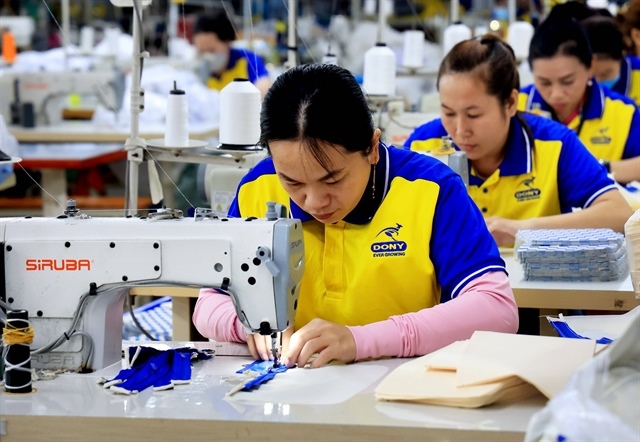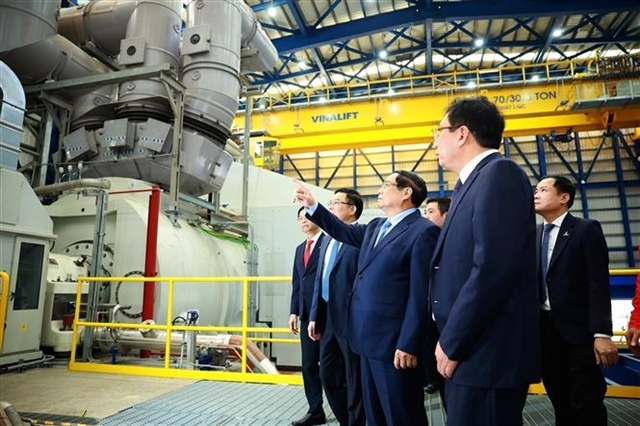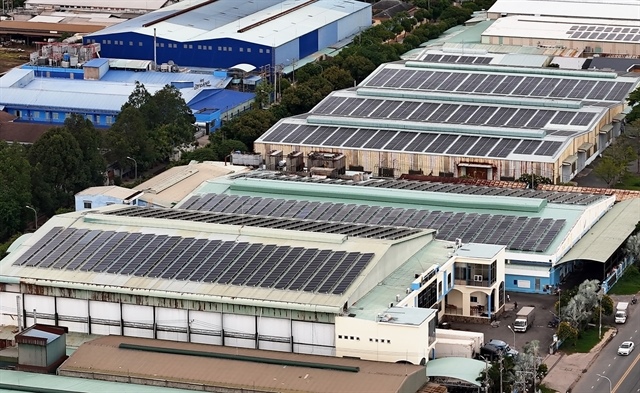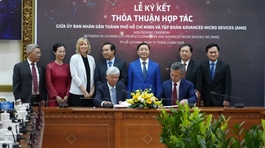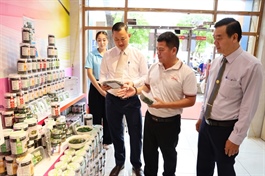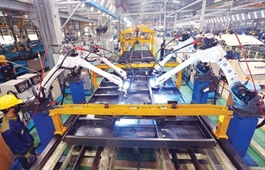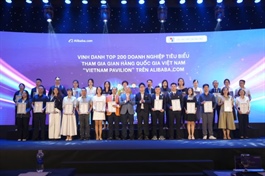Vietnam’s semiconductor strength lies in its workforce
Vietnam’s semiconductor strength lies in its workforce
At a conference on digital twins for Vietnam's semiconductor workforce in Hanoi on June 12, industry experts declared Vietnamese workers to be its greatest advantage, which will be supported further by digital twin technology.
|
Amid global supply chain shifts and geopolitical uncertainty, Vietnam is fast becoming a semiconductor investment hotspot. The country offers competitive advantages including skilled yet cost-effective labour, modernising infrastructure, progressive policy reforms, and strong government commitment to semiconductor industry growth.
According to Vu Quoc Huy, director general of the National Innovation Centre (NIC) under the Ministry of Finance (MoF), the global semiconductor industry was valued at close to $600 billion last year, following two decades of rapid and stable growth.
"It is estimated that the world will need over one million additional personnel by 2030 across all stages including design, manufacturing, assembly, packaging, and testing of chips. With an abundant and qualified workforce, Vietnam’s people represent its greatest adtvantage," said Huy.
"Therefore, focusing investment on training and retraining the workforce to quickly enter the labour market is a strategic approach and a decisive factor to seize investment cooperation opportunities, access technology transfer, and promote rapid and sustainable economic development based on science, technology, and innovation," he added.
Vietnam currently has over 60 microchip design enterprises, more than 6,000 design engineers, and nearly $12 billion in foreign investment in the semiconductor industry. According to Huy, "These figures show great potential but also indicate that without a sufficiently strong human resource base, it will be difficult to master the high-value stages in the global supply chain."
As a result, the NIC has committed to assist domestic and international partners in realising the goal of training at least 50,000 university-level personnel, 1,300 specialised lecturers, and building and developing a system of more than 20 national and local laboratories serving semiconductor training and research by 2030.
"In this roadmap, digital twin technology plays a practical yet central role by optimising investment costs, reducing operating expenses, and enabling access to advanced equipment models in a simulated environment, thereby improving training quality to promptly meet enterprises’ practical demands," Huy said. "This foundation will enable Vietnam not only to deepen participation in the global semiconductor value chain but also gradually master and lead high value-added stages, realising the goal of becoming a semiconductor industrial power in the near future."
The industry's growth continues to accelerate, with the wafer fabrication equipment market surpassing $100 billion in 2024. Within this expanding landscape, Vietnam has emerged as a key player in Southeast Asia's semiconductor landscape. As the world's second-largest semiconductor exporter, commanding 22.5 per cent of global market share, Vietnam boasts a strong foundation of fabless companies and electronics manufacturing services. The country's hardware and electronics exports already represent over 30 per cent of total exports, with its semiconductor market projected to grow at an impressive 11.6 per cent compound annual rate through 2027.
According to Andrew Goh, corporate vice president and general manager of Lam Research's Southeast Asia operations, semiconductor demand is intensifying as electronics are increasingly integrated into every aspect of lives, enabling the transformation of industries like healthcare, transportation, commerce and services, agriculture.
"Lam Research will donate its digital twin Semiverse platform to Vietnamese institutions to train a skilled semiconductor workforce. This digital twin technology connects global innovation hubs, allowing students to access machinery and conduct remote experiments," said Goh.
This initiative supplements existing curricula, simulates chip design and the complete fabrication process, and is suitable for all academic levels. It is also easy to implement across universities. The proposed model involves a multi-year commitment, with government support covering operational costs, and Lam Research providing funding for the first semester and co-funding for subsequent years.
Meanwhile, Dassault Systèmes presented its SEMI UNIV + RSE digital twin platform, which creates opportunities for semiconductor education by linking the physical and virtual worlds.
SEMI UNIV + RSE digital twin can do 10-20 per cent savings on materials and energy usage; 10-20 per cent defect reduction by leveraging co-optimisation; 15-30 per cent cost reduction through optimised integration; 10-25 per cent cost savings through improved utilisation; 20-40 per cent cost reduction by leveraging simulations; 10-15 per cent reduction in logistics and supply chain costs.
Brian Lo, country manager of Dassault Systèmes Vietnam, believes the solution addresses critical challenges in the semiconductor industry amid digital transformation. "Virtual Twin technology allows students and engineers to access lab-grade simulations remotely, helping to bridge the gap between theory and industry practice," said Lo.
- 18:56 13/06/2025


